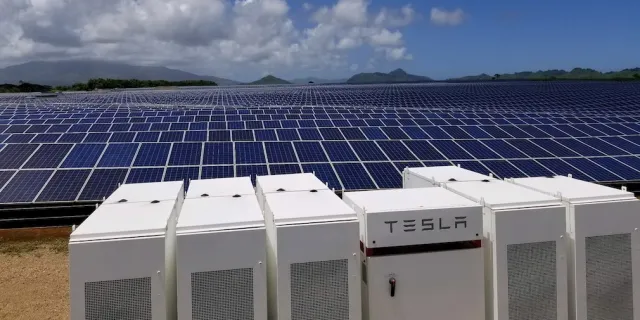Using machine learning and cheap satellite data to design rooftop solar power
Aug 13, 2019 08:11 PM ET
- Researchers have built a tool to use cheap satellite imagery – like Google Maps – to automatically create solar designs with a 91% accuracy rate.

This author’s solar punk novel involves the team from Clean Coalition using their power grid maps, guiding business areas with strategic solar+storage placement on a city level, taking into account Tesla’s 1,600+ superchargers, and everyone having solar+storage in their homes. At some percentage, within this super distributed network we will gain resiliency. To get there will take patience, and smart tools.
Researchers at the University of Massachusetts, Amherst campus, have built a software tool, called DeepRoof, which they say has achieved a “true positive rate” of 91.1% in identifying a roof’s solar power potential, while using widely available (and cheap) satellite data from tools like Google Earth. Their goal in Deep Roof: a Data-Driven Approach For Solar Potential Estimation Using Rooftop Imagery, is to take a list of address (or GPS coordinates) from a contractor and hand back the solar power potential of those sites.

The researchers were able to build upon many already existing advances in machine learning to automatically identify structures like buildings and trees, but found most of these tools used LIDAR – a laser-based aerial mapping technology to determine roof geometry, as well as shade from nearby objects. Unfortunately LIDAR data is expensive to collect as drones or airplanes are needed, and not widely available. Google’s Project Sunroof was noted as a high quality LIDAR based tool for this type of work – but is limited to large US cities, and higher populated regions.
The group’s first step is Terrain Segmentation in which they determine – on a pixel level – whether there is a structure, shadows, or rooftops. The researchers noted that identifying objects in an image at a pixel-level, is referred to as semantic segmentation, and is a well-researched computer vision problem in which recent “deep learning” approaches have outperformed previous vision based techniques.
Following this the software will then look at the individual shapes and directions these pieces face, in the Topology Estimation portion of the process. The researchers note that outlines of a building property can be easily gotten from OpenStreetMap, as well all the buildings within a specified area and their address information. Then, they combine that with real-estate datasets and Federal Emergency Management Agency guidelines to provide reasonable estimate about the height and pitch of the roof.
Again, making use of publicly available solar insolation data – they combine the shapes of the buildings determined above, and what they call a “greedy algorithm” that outputs the overall number of panel that fits the roof. Which then makes it easy to automatically determine the install capacity by multiplying the total number of panels with the rated power output per panel.
The group compares their models to the aforementioned Project Sunroof results, as well other tools – like above – to determine how their roof model predicted shapes compared to other tools on the market (UNet and MaskRCNN in above image). They found their results were at least comparable, and usually a bit better than those tools.
The researchers also asked two solar experts to rate their models individually, see below, on a per surface level. The reseachers asked, (i) How well does DeepRoof estimate the solar potential of each planar roof segments? (ii) Are there locations on the roof that our approach fails to identify as possible locations where experts would consider installing solar panels?
Overall, they found that both the experts gave a rating of 8 and above to 22 of the 30 homes. For these homes, DeepRoof predicted the orientation correctly, as well considered shade from nearby trees to estimate the solar potential. For homes that received a rating lower than 8, in most cases, DeepRoof failed to identify the surrounding trees.
Also read

